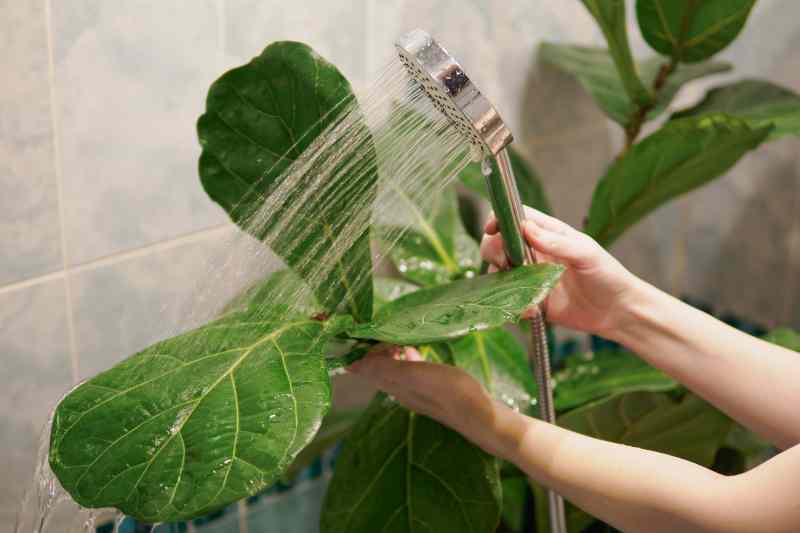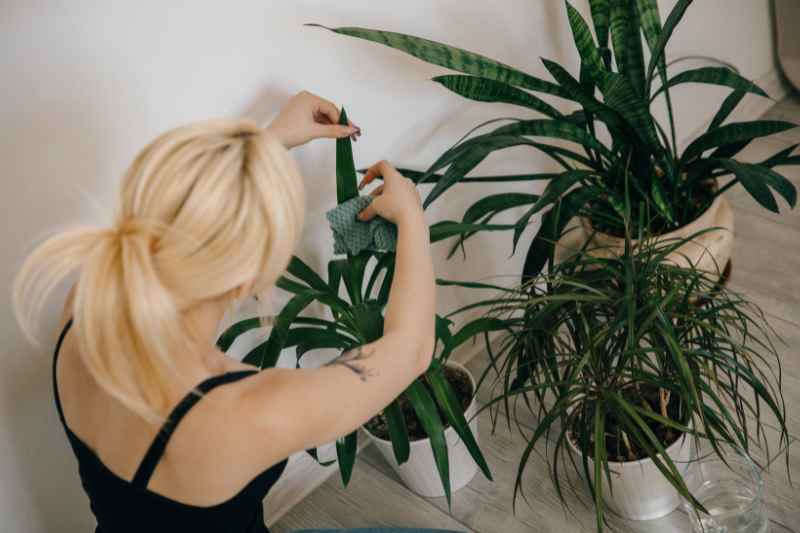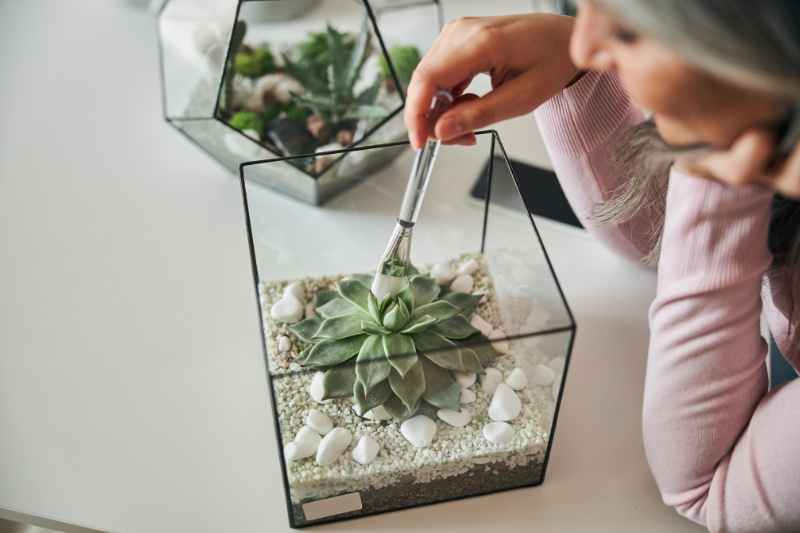At home, houseplants gather dust just like furniture or carpets. The leaves become dull and require regular cleaning, as they do not benefit from outdoor conditions like rain to wash away accumulated dirt. But how can we effectively dust and clean our green plants? Here are some tips and tricks to restore the shine to your indoor plants.

1-Why is it important to clean the leaves of houseplants?
Cleaning is a step not to be overlooked in the care routine for your favourite green plants!
Whether they grow in an apartment or a house, houseplants are also affected by dust particles, smoke from smokers, and indoor pollution, even developing a greasy film when placed in a kitchen.
When too much dust accumulates on the lamina of the plants, not only does the plant become less aesthetically pleasing, but photosynthesis is also reduced, which ultimately affects the plant's health. Layers of dust will hinder the plants' respiration and gas exchanges over time.
Cleaning the foliage of houseplants also allows you to better observe the health of your plant by detecting possible pests that often hide under the underside of the leaves. This helps to remove, for example, small soil flies (sciarids) that may be present, as well as aphids or whiteflies. Clean leaves will always be less attractive to harmful insects and less likely to attract fungi and mites.
2- Which plants should we clean the foliage of?
Almost all plants will appreciate having their foliage cleaned for the reasons mentioned above. The most receptive to foliar cleaning are all plants with large leaves such as Monstera, certain Ficus, Philodendron, and/or those with smooth foliage or that are watered less frequently, like Aspidistra or Sansevieria. These are also the ones that will be the easiest to clean.
We can broadly categorise houseplants into four distinct groups based on the type of foliage:
- Plants with broad and/or thick foliage (Monstera, Alocasia, Croton, Caladium, Ficus lyrata, Ficus elastica…)
- Plants with small leaves (Ficus benjamina, Crassula, bonsais…)
- Plants with fine or fuzzy leaves (ferns, Calatheas, Saintpaulia, Maranta…)
- Spiny plants or succulents (cacti, Aloe Vera, Crassula, Echeveria, Yucca…).
3- How to effectively dust the foliage?
Each plant has its own particularities, depending on whether the lamina is smooth, fuzzy, large, or small. For each plant morphology, a personalised cleaning routine is required, or rather, each leaf has its own dusting technique. In all cases, use rainwater or demineralised water at room temperature to avoid limescale marks and thermal shocks.
Broad, tough foliage: shower time!
Showering the foliage is suitable for large plants with broad, thick, or rigid leaves, which are less sensitive to the shower spray… or a light rain outside! Green plants with smooth leaves (Ficus, Monstera) can also be cleaned with a damp cloth (see point 3), but deserve this special treatment once or twice a year.
Take advantage of a rain shower to place your larger plants outside, ideally between spring and autumn, when temperatures remain mild. This is the ideal option. If you have a bathtub, use it for a gentle shower on the leaves, with a fine spray and almost warm water. In both cases, ensure your plants drain well before returning them to their cache-pot. Trailing adult plants also benefit from this operation, taking care to wet them quickly.
Note: for plants that are very dirty but fragile, simply submerge the entire aerial part in a large basin.

Small foliage: use a spray bottle
This applies to both small leaves and plants like ferns, bonsais, or palms.
Spray the entire lamina with rainwater at room temperature, or if unavailable, demineralised water, as hard water will leave an unsightly film or white spots on the leaves.
Don't forget to take your small-leaved plants out for a light rain in spring or summer. This is ideal for a mature Ficus benjamina, for example, where it would be tedious to clean each small leaf individually, or a Cyperus papyrus, for instance.
Linear, elongated leaves and large, soft leaves: use a sponge
A damp cloth, sponge, or water-moistened fabric is perfect for cleaning plants like Strelitzia, Alocasias, and indeed most plants.
Be gentle to avoid damaging the leaves… some broad leaves can tear if you "scrub" too hard! The idea is to gently moisten each leaf, cleaning both sides. This way, you can remove quite a bit of dust each time!
Gwenaëlle's tip: I personally use reusable cotton pads for orchids, Sansevieria, or Strelitzia.

Fuzzy foliage, spiny plants: use a brush
This is trickier, as it involves plants with textured, fuzzy, or spiny foliage… mainly cacti and succulents.
For this category of plants, dusting is the preferred method, as their leaves are sensitive to excess moisture. Therefore, avoid cleaning them with water. You should also intervene with them more frequently than with other green plants.
For the fuzzy leaves of Saintpaulia, for example, use a fine, soft brush, slightly moistened, and gently brush over the leaves from the centre to the tip of the lamina. For the spiny leaves of cacti, do the same, brushing the brush over each needle.

4-What is the frequency of cleaning houseplants?
The frequency of cleaning varies significantly depending on the type of plant or their living environment: more frequent cleaning should be done for all plants living in urban settings and in small, less bright apartments. Trailing plants, which are more exposed to dust because they are placed high on furniture and tend to be forgotten (like ivy, Pothos…) should also be monitored more closely. Some plants are also more sensitive than others: fuzzy plants attract more dust, and ferns suffer more from dust accumulation.
Simply remember to clean them when you dust your furniture! Once a month is ideal, especially in winter, when the lamina particularly suffers from a lack of light.
5- Avoid polishing products!
Garden centres and online gardening sites sell so-called polishing products for plants… An absurdity! They clog the plant's pores (the stomata, those microscopic openings that ensure, among other things, its respiration) and often attract even more dust.
To restore shine to foliage, also forget about beer, milk, or oil, which, if misused, can make plants sticky.
Simply cleaning the leaves of a green plant with rainwater is sufficient for the plant to regain the shine it lost with the layer of dust. In a word, the less, the better!
One rule: use non-hard water, so rainwater if yours is hard.
Pssst! One last tip: do not attempt to clean very young and fragile leaves, which are a tender green. Wait until the leaves are well established.































Comments